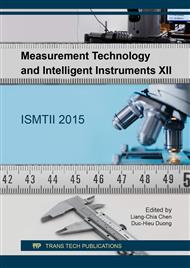p.383
p.389
p.395
p.401
p.407
p.412
p.418
p.427
p.432
A Study of Making Dye Sensitized Solar Cell Using MK-II Dye by Electrophoretic Deposition Method
Abstract:
Dye Sensitized Solar Cell (DSSC) is more inexpensive and ecofriendly than silicone solar cell from structure. It has been reported that DSSC made by used ruthenium reaches 10.7 % [1]. However there are some contradiction so that a pigment named Ruthenium complex which is toxic is used in it. So we investigated to solve these problems using MK-II dye that is inexpensive and harmless. At the same time, we explored what kind of influence in conversion efficiency from difference of coating thickness by Electrophoretic Deposition (EPD) method. This method can lead to use flexible materials [2]. Because letting to deposit Titanium oxide (TiO2), we can lower sintering temperature or less to plastic melting point. The result was cell’s conversion efficiency better than others in case of 90sec and 100sec of electrophoresis time. From our experiments it is able to be said that coating thickness made by 90sec and 100sec are suitable, and its difference affect conversion efficiency.
Info:
Periodical:
Pages:
407-411
Citation:
Online since:
September 2017
Authors:
Price:
Сopyright:
© 2017 Trans Tech Publications Ltd. All Rights Reserved
Share:
Citation:


